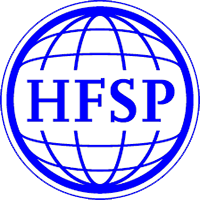When placed at close proximity of each other on a symmetric, sub wavelength molecular scaffold, several quantum emitters can couple to emit light like one giant quantum entity. When hundreds of emitters couple this way, the light is very intense and short lived. Our lab was the first to use a virus template and demonstrate this non-classical effect at room temperature. We are studying synthetic pathways, and photo physical properties with an array of tools developed in the lab specifically for this project. The goal is to establish the mechanisms and thus control the properties, and offer alternative high performance optical probes for deep tissue biomedical imaging, and photocatalysis.
Nanoscale Optics, Quantum Photonics, Physical Virology, Bio-architected hybrid materials with 3D nanoscale order.
Dynamics of heat dissipation from light absorbing nanoparticles embedded in a material is studied with the goal of understanding phase transformations induced by nanoparticles at a scale where properties depend on size. Specifically, cooling and heating rates can be enormous, which leads to phase transformations occurring very far from equilibrium. At that scale, proteins can be heated by a thermal pulse without having time to denature, and ions and impurities become trapped behind the advancing liquid-solid interface during recrystallization. We study such far-from equilibrium processes using an in-house developed pulsed photothermal scanning microscope.
3. Bio-inspired Nanoparticle and Molecular Self-assembly:
Self-organization, adaptive dynamics, and multiple states accessible via reversible transformations, are hallmarks of living matter and the origin of many of its astonishing properties. Capturing them all in a biosynthetic material has been a long-term tantalizing idea for us. By adding abiotic components to a self-organized biotic scaffold, one could envision novel matter-light interactions (see Area 1) and new therapeutic delivery vectors (see Area 4).
Viruses provide inspiration as responsive nano materials where function greatly exceeds the sum of the parts. Yet, traditional tools tend to emphasize molecular characteristics which ignore the network of inter-molecular interactions that make a virus be some of the simplest self-assembled biological systems on the boundaries of living, encompassing self-organization and adaptive, multiple functional states. How can the weak intermolecular interactions required for virus assembly, lead to virus shells that are surprisingly resilient to thermal and mechanical perturbations? What are the feedback loops that must be present for molecular quality control, at a 5 to 50 nm scale, in icosahedral and helical virus assembly? Viruses are efficient encapsulators for their genetic cargo - how can we convert them into encapsulators of useful abiotic molecular and nanoparticle species? Viruses hijack intracellular transportation highways. Could we learn from it how to build actively-driven microtubule networks to organize dynamically and reversibly millions of nanoparticle-laden virus-like particles into photonic arrays, on a few seconds time scale? Our goal is to create a research and education collaborative network apt at tackling such questions, which require in general different perspectives than the core disciplines.
Our collaborators:
Paola Borri (Cardiff U) Four-wave mixing single-particle tracking microscopy |
Trevor Douglas (IU Chem) P22 scaffolds |
Michael Hagan (Brandeis) Virus Mechanochemistry |
Stephen Jacobson (IU Chem) Nano-optical trapping |
Martin Jarrold (IU Chem) CDMS |
Alan Rein (NCI) HIV Gag assembly |
William Schaich (IU Phys) computational optics |
Paul Van der Schoot (TU Eindhoven) VLP Assembly |
Claudia Simon (U Tuebingen) Murine polyoma GFP VLPs |
Sara Skrabalak (IU Chem) Nanoparticle-assisted melting/recrystallization |
Roger Temam (IU Mathematics) Virus Mechanics |
Roya Zandi (CU Riverside) VLP Assembly |
The Dragnea group gratefully acknowledges support throughout the years from:

DOE Basic Energy Sciences

The Army Research Office

The Human Frontier Science Program

NIH - NIGMS program

NSF - CHE, DMR, and CBET programs


